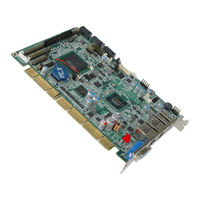IEI Technology PCISA-PV-N4551-R10 Manuals
Manuals and User Guides for IEI Technology PCISA-PV-N4551-R10. We have 1 IEI Technology PCISA-PV-N4551-R10 manual available for free PDF download: User Manual
IEI Technology PCISA-PV-N4551-R10 User Manual (145 pages)
Half-Size CPU Card for Intel Atom CPU, DDR3, VGA, LAN, SATA 3Gb/s, USB, HD Audio, RoHS Compliant
Brand: IEI Technology
|
Category: Computer Hardware
|
Size: 7 MB
Table of Contents
Advertisement
